Good evening
Today was one of almost continual cruising up the Irrawaddy River except for an hour stop in a small very quiet Myanaung Town which used to be a bustling Divisional British administrative capital and was the headquarters of international oil and mining companies. The British left in 1949 and the rest of the foreigners left in 1964 when banks and international companies, like BP, were nationalized. Now it is a "ghost town", colonial structures black with age, slowly sinking back into the ground.
For the past two days we passed miles of cultivated fields but not a tractor to be seen. It was all hand digging and oxen teams. In 1962 Burma was the #1 exporter of rice in the world. At that time 74% of the population were farmers...who initially were pleased when the government took over all the land and redistributed it...20 acres according to the size of family. They soon found having to sell 80% of their rice crop to the government at official prices was an economic disaster. Productivity and quality tumbled and by 1974 the country's export of rice fell to zero.
The modern history of Burma (meaning colonial time since 1885) is complicated and I find somewhat difficult to follow as a foreigner. I have tried to keep track of it over the years, and indeed, Gary and I wouldn't consider coming to Myanmar before Aung San Suu Kyi was released from house arrest. We felt we should be part of the world wide "boycott"...didn't want our tourist dollars to help out "the generals". But I still find it difficult to follow all the machinations that have occurred. I am going to try to describe the skeleton of a very sad story.
The first thing you have to understand is that Burma has struggled for independence, meaning to regain its sovereignty, since it was first occupied by Britain, and certainly with greater focus since the 1920's. Why...because the British brought in Indians who did well financially. The British also denied the Burmese administrative posts. Poverty and unemployment among the Burmese resulted in growing opposition to the British, spearheaded by radical monks and students from Yangon University. Among the latter were a group called the 30 Comrades, led by a young socialist, Aung San, the future leader and Aung San Suu Kyi's father.
During the 1930's the British issued an arrest warrant for Aung San as he continually led protests demanding independence. As a result Aung San and the 30 Comrades fled to Japan, returning to Burma with Japan as part of rhe1941 invasion. Aung San then raised 200,000 Burmese troops, created the Burmese Independence Army (BIA), and fought along side Japan during the early years of the war.
Aung Sun and his troops participated in pushing the British and Indian forces back 1,500 km to the Indian border. Hundreds of thousands of Indian refugees accompanied the "glorious retreat" were harassed and murdered by the Burmese as they fled for their homeland. Around 12,000 troops and 30,000 civilians perished in the mass retreat....a disaster.
As an aside, it is as a part of this retreat and during the subsequent battles as the allies fought to retake Burma that the skills and abilities of Lt Col James Howard Williams (Elephant Bill) and his company of elephants,,seemingly led by Bandoola, proved to be so invaluable at ferrying people and belongings north, and building bridges and roads for the movement of troops and supplies back south. Another shout out for Vicki Croke's biography "Elephant Company".
During the Japanese occupation, Burma became a de facto puppet state with the leaders of the former Burmese Liberation Army nominally at the helm. In March 1945 Aung San switched allegiances placing his troops at the disposal of the allies. Our guide said it was the increasing Japanese civilian brutality and the conscription of BIA troops for the railway building in slave labour conditions.
After the war Burma pressed for full independence, talks were concluded in January 1947 with Britain agreeing to grant Burma freedom the next year. Three months later Aung San's party won the general election, but celebrations were short lived. On July 19 gunmen shot dead Aung Sun and six of his ministers. Although a friend of Aung San, U Nu took over, the country, it descended into civil war as conflicts erupted between the army and various regional forces and ethnic minorities. It is for his clear unwavering vision of a free and independent Burma that Aung San is called the "George Washington" of Burma. He was only 33 at the time of his assassination.
In 1962 Prime Minister U Nu was ousted in a military coup. This marked the start of a radical military dictatorship under the Burma Socialist Programme Party. Private property was confiscated by the state; businesses, agriculture and the media were nationalized and foreign aid groups and opposition parties banned. As a result Burma became one of the poorest nations in the world.
During the 1980's public demonstrations against the military spread nationwide, leading to the declaration of martial law. Aung San's daughter, Aung San Suu Kyi, emerged as the popular leader. Soe, our guide says, it was somewhat by accident...she was home from England to care for her sick mother in the Yangon Hospital. She met some students who requested her to make a speech. The rest, as they say, is history.
In 1988 another army coup brought the hard line State Law and Order Restoration Council under General Saw Maung to power. A year later the country's official English name was changed to Myanmar. In 1990, confident it had the support of the people, and having confined leaders of opposition parties, the military government held free elections only to lose by a crushing margin, with Aung San Suu Kyi's National League of Democracy (NLD) polling 60%. The reaction....round up dissidents, NLD activists, continue house arrests and distance the country from the rest of the world.
General Than Shwe dominated politics in the 2000s, promised democracy but did deals with China and Russia, became wealthy, founded a bank in his name and then moved the capital out of the public's eye to Naypyitaw...into the jungle as we were somewhat ironically told.
In 2007 the continually worsening conditions led to the country-wide uprising of the monks dubbed the Saffron Protests. The usual brutal clampdown followed.
A Constitutional Referendum was held in 2008, and though dubbed a sham, paved the road for major political reforms. These included the release of Aung San Suu Kyi in 2010, amnesties for political prisoners, new labour laws and a relaxation of press censorship.
Aung San Suu Kyi entered parliament in 2012 for the first time. The constitution written by the generals forbids anyone married to a foreigner, or who has a parent who is a foreigner to be Prime Minister ...thus neither Aung San Suu Kyi nor her sons can aspire to that position. But there seem to be "work arounds".
It remains to be seen if the fragile new government will be able to cope with the years of total mismanagement of the economy, the wide spread corruption, the tenuous relationship with the military and not least bring into the fold the many minorities living within Myanmar. Everyone we have spoken to is realistic but hopeful. They also have told us the international sanctions put on Myanmar, especially in the mining sector, helped to bring about the changes...as did the world focus on the abuses of human rights. A long hard road ahead.
And so we continue to steam up river. We officially entered the Irrawaddy River where the old customs house used to be located. Here where there are Buddhas carved into the cliffs, the river narrows and the Burmese regimes set up the defences and a customs house to levy taxes on the goods coming down the river...particularly on the valuable teak log booms. Just as we arrived a river barge was travelling downriver with a load of teak logs. Now the logs are barged from Mandalay south so the bridges won't be damaged.
This afternoon's stop was at Pyay which the a lonely Planet calls a breezy location on the Irrawaddy...well not so much today. The iPad is hating these place names...as apparently did the British. They gave up on pronouncing Pyay and called the town Prome. Pyay boomed in the 1890's....it was a British colonial centre, a natural service and transportation centre...and drum roll...it was the headquarters of the Irrawaddy Flotilla Company. It is a bit of a backwater today...as we have discovered are all the towns we have visited along the river, but quite a pleasant bustling town...of 180,000.
Better jetty to pull up to today...I mean no stairs to be carved...so we were off to visit "ancient Burma". We visited the ruins of the ancient city of Sri Kseta, capital of the Pyu Kings. It was a site which called upon your imagination...although it is one of the 10 UNESCO world heritage sites in Myanmar. We went onto a Paya of which I don't have the name...but the best part was there was a wedding ongoing which welcomed us in for the festivities. We sat, we ate cake, we took photos, we gave gifts to the lucky couple and everyone was delighted.
Over the wedding chairs of the couple were their backgrounds and degrees...she an engineer; he with an masters in science. Both in there mid thirties. Very happy parents. Our guide said...oh she works for the Dept of Irrigation...you know dams on rivers...very good chance for bribes...good job to have! Tomorrow we learn about the traditional Burmese country weddings...will let you know what I missed.
Then shoes off for the Shwesandaw Pagoda which sits on a low hill on the south side of town. The stupa was pretty dramatic as the sun set and the guided surface glowed. From the pagoda we could see the giant Sehatgyi Buddha, who looks back over the tree line. Hmmm...enough Buddhas for one day...morning, noon and night.
We have had 12 more folks join the Pandaw 2 today...they had been told the lower Irrawaddy was boring so to hop on at Prome. They also had an all day bus trip to reach here which is one reason I didn't choose that option.
We have now had dinner and we seemed to have stopped for the night beside the river bank...and so...good night...3 hours of temples and markets do it for me in a day. This travelling stuff is work...sometimes.
Love
Doreen
Along the Irrawaddy River... Pyay...or Prome
Friday, November 25, 2016
![]() Hpa-An, Kayin State
Hpa-An, Kayin State
Other Entries
-
5Trudging around Messina, Sicily
Oct 0551 days prior Messina, Italyphoto_camera17videocam 0comment 8
Messina, Italyphoto_camera17videocam 0comment 8 -
6Through the Parting of the Desert...the Suez Canal
Oct 0848 days prior Suez, Egyptphoto_camera18videocam 0comment 10
Suez, Egyptphoto_camera18videocam 0comment 10 -
7Petra and Wadi Rum, Jordan
Oct 1046 days prior Petra, Jordanphoto_camera29videocam 0comment 13
Petra, Jordanphoto_camera29videocam 0comment 13 -
8The Fourth Sea Day
Oct 1442 days prior Perth, Australiaphoto_camera19videocam 0comment 10
Perth, Australiaphoto_camera19videocam 0comment 10 -
936 Hours In DUBAI...
Oct 1739 days prior Dubai, United Arab Emiratesphoto_camera35videocam 0comment 14
Dubai, United Arab Emiratesphoto_camera35videocam 0comment 14 -
10Cochin (Kochi), India.. "Queen of the Arabian Sea"
Oct 2234 days prior Cochin India, Indiaphoto_camera23videocam 0comment 16
Cochin India, Indiaphoto_camera23videocam 0comment 16 -
11A day at the Zoo...Singapore
Oct 2828 days prior Singapore, Singaporephoto_camera31videocam 0comment 13
Singapore, Singaporephoto_camera31videocam 0comment 13 -
12Bali
Nov 0421 days prior Kota Denpasar, Indonesiaphoto_camera33videocam 0comment 7
Kota Denpasar, Indonesiaphoto_camera33videocam 0comment 7 -
13Kalgoorlie and onto Esperance
Nov 0817 days prior Perth, Australiaphoto_camera22videocam 0comment 10
Perth, Australiaphoto_camera22videocam 0comment 10 -
14Hanging out in Albany
Nov 1114 days prior Albany, Australiaphoto_camera18videocam 0comment 11
Albany, Australiaphoto_camera18videocam 0comment 11 -
15Along the Southern Coast of Australia
Nov 1114 days prior Albany, Australiaphoto_camera18videocam 0comment 9
Albany, Australiaphoto_camera18videocam 0comment 9 -
16South West Australia
Nov 1411 days prior Augusta, Australiaphoto_camera24videocam 0comment 4
Augusta, Australiaphoto_camera24videocam 0comment 4 -
17Geographe Bay (Busselton)
Nov 1510 days prior Busselton, Australiaphoto_camera21videocam 0comment 5
Busselton, Australiaphoto_camera21videocam 0comment 5 -
18Perth...from the ridiculous to the sublime
Nov 178 days prior Perth, Australiaphoto_camera9videocam 0comment 1
Perth, Australiaphoto_camera9videocam 0comment 1 -
1948 Hours in Yangon, Myanmar
Nov 205 days prior Yangon (Rangoon), Myanmarphoto_camera37videocam 0comment 9
Yangon (Rangoon), Myanmarphoto_camera37videocam 0comment 9 -
20On the Irrawaddy....
Nov 223 days prior Yangon (Rangoon), Myanmarphoto_camera30videocam 0comment 11
Yangon (Rangoon), Myanmarphoto_camera30videocam 0comment 11 -
21On the Irrawaddy...Still in the Delta...Nov 23rd
Nov 232 days prior Yangon (Rangoon), Myanmarphoto_camera35videocam 0comment 17
Yangon (Rangoon), Myanmarphoto_camera35videocam 0comment 17 -
22Along the Irrawaddy River... Pyay...or Prome
Nov 25Hpa-Anphoto_camera27videocam 0comment 5 -
23Thayet Myo, along the Irrawaddy River
Nov 261 day laterHpa-Anphoto_camera25videocam 0comment 2 -
24Magwe...or how I spent my birthday!
Nov 283 days later Hpa-An, Internationalphoto_camera27videocam 0comment 10
Hpa-An, Internationalphoto_camera27videocam 0comment 10 -
25Bagan a city of 2,000 temples
Nov 294 days laterMyingyanphoto_camera23videocam 0comment 9 -
26Bagan and Ohn Ne Chaung
Nov 305 days later Myingyan, Internationalphoto_camera37videocam 0comment 6
Myingyan, Internationalphoto_camera37videocam 0comment 6 -
27Mandalay
Dec 027 days laterMandalayphoto_camera37videocam 0comment 4 -
28Watching the Irrawaddy slip past on the last day
Dec 049 days laterMandalayphoto_camera34videocam 0comment 7 -
29Inle Lake, Eastern Myanmar
Dec 0914 days laterTaunggyiphoto_camera51videocam 0comment 16
Comments
2025-05-23
Comment code: Ask author if the code is blank

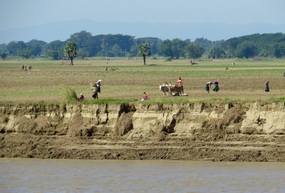
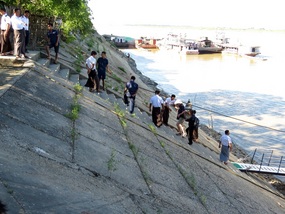

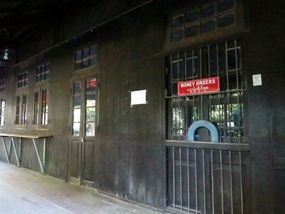
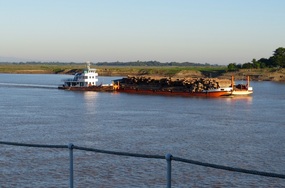
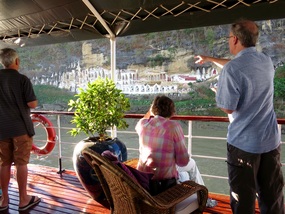

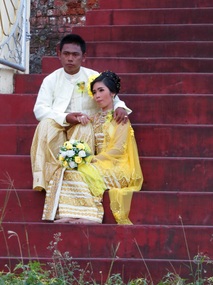
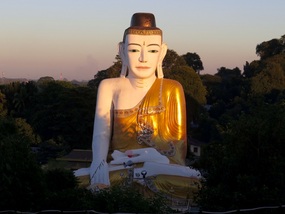
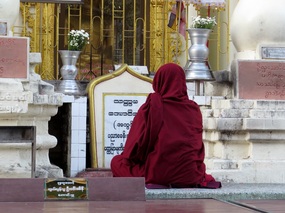











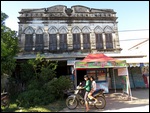
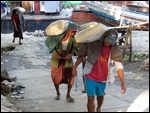
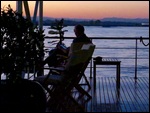

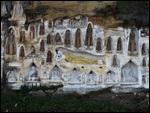

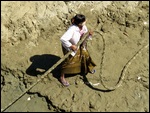
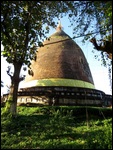

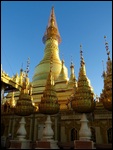

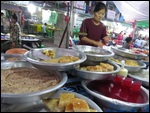

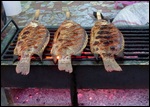
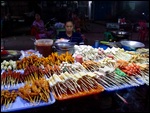
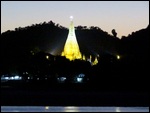
Dan
2016-11-26
What a great synopsis of one and a half centuries of history! Hope the newcomers to your group fit in. Do all the passengers aboard the ship speak English? On each of your blogs I come across several images that I imagine are 'wall worthy' and hope to see in your den or living room sometime in the future! Today was no exception. I so look forward to your blog!
doreenmullins.7
2016-11-26
We have internet tonight...so I reply. Thank you Dan...I also have to say the ratio of keepers to taken is so high here in Myanmar...amazingly folks are so into letting you take a photo...and Gary talks to everyone in the market...so has some wonderful portraits. We are having a ball...but bugs are dropping onto the screen so good night...and thanks for all your comments...really appreciated.